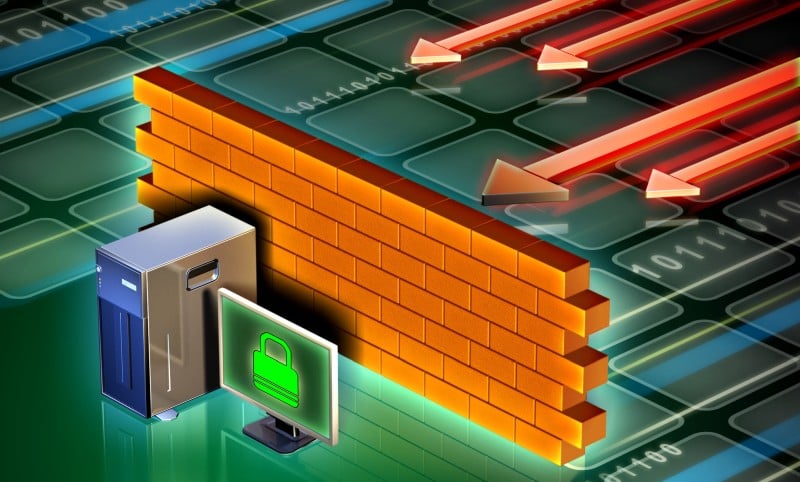What are Network Firewalls?
Network firewalls are designed to protect computers from outside threats such as viruses, malware, spyware, and other malicious software. They also prevent unauthorized access to your company’s internal network resources.
A network firewall is essential for businesses because it can stop hackers from accessing sensitive information and either disrupting operations or holding the company ransom for its data (also known as a ransomware attack). In addition, it can also help you monitor employee activities and ensure compliance with corporate policies.
What are Network Firewalls?
Network firewalls are security devices used to stop or mitigate unauthorized access to private networks connected to the Internet, especially intranets. The only traffic allowed on the network is defined via firewall policies – any other traffic attempting to access the network is blocked. Network firewalls sit at the front line of a network, acting as a communications liaison between internal and external devices.
A network firewall can be configured so that any data entering or exiting the network has to pass through it – it accomplishes this by examining each incoming message and rejecting those that fail to meet the defined security criteria. When properly configured, a firewall allows users to access any of the resources they need while simultaneously keeping out unwanted users, hackers, viruses, worms, or other malicious programs trying to access the protected network.

How does it work?
A firewall is set up to constantly regulate and monitor all incoming and outgoing traffic. It differs from a simple traffic analyzer in that a network administrator or security manager can control that traffic. Some firewalls can be configured to block pretty much everything except for people and actions you specifically allow.
How would a network firewall security work in real life?
Let’s say you work at an organization with 100 employees. If you don’t have a firewall configured, those 100 computers used by employees are vulnerable and available to anyone with an internet connection. Hackers can easily exploit employee mistakes and disrupt the network or spread malware.
Here are just a few of the ways a malicious attack on a network could occur on a network like the hypothetical company above without a firewall:
- Remote login: Hackers can view or obtain your files running on your device.
- Denial of service (DoS): This is a common tactic that uses brute force. A hacker sends a request to open a session with a server that can’t be found. The destination server is soon overwhelmed by these unanswerable session requests – usually resulting in a system crash.
- Email bomb: A huge amount of emails are sent to you so your email system can’t handle any new emails.
- Macros: Hackers create their macro (aka a script of computer demands so an application can run) that crashes your computer.
- Viruses: A virus is a form of malware that copies itself from one system to the next and it can be as harmless as a prank message or it can destroy your data.
If a company has a proper firewall setup, each device connected to the internet would have a line of defense that implements particular security rules.
Types of Network Firewalls
- Packet Filters: This is a technique used to control network access by monitoring outgoing and incoming packets and allowing them to pass or halt based on the source and destination Internet Protocol (IP) addresses, protocols, and ports. This firewall is also known as a static firewall.
- Stateful Inspection Firewalls: It is also a type of packet filtering that is used to control how data packets move through a firewall. It is also called dynamic packet filtering. These firewalls can inspect if the packet belongs to a particular session or not. It only permits communication if and only if, the session is perfectly established between two endpoints else it will block the communication.
- Application Layer Firewalls: These firewalls can examine application layer (of OSI model) information like an HTTP request. If find some suspicious application that can be responsible for harming our network or that is not safe for our network then it gets blocked right away.
- Next-generation firewalls: These firewalls are called intelligent firewalls. These firewalls can perform all the tasks that are performed by the other types of firewalls that we learned previously but on top of that, it includes additional features like application awareness and control, integrated intrusion prevention, and cloud-delivered threat intelligence.
- Circuit-level gateways: A circuit-level gateway is a firewall that provides User Datagram Protocol (UDP) and Transmission Control Protocol (TCP) connection security and works between an Open Systems Interconnection (OSI) network model’s transport and application layers such as the session layer.
- Software Firewall: The software firewall is a type of computer software that runs on our computers. It protects our system from any external attacks such as unauthorized access, malicious attacks, etc. by notifying us about the danger that can occur if we open a particular mail or if we try to open a website that is not secure.
- Hardware Firewall: A hardware firewall is a physical appliance that is deployed to enforce a network boundary. All network links crossing this boundary pass through this firewall, which enables it to perform an inspection of both inbound and outbound network traffic and enforce access controls and other security policies.
- Cloud Firewall: These are software-based, cloud-deployed network devices. This cloud-based firewall protects a private network from any unwanted access. Unlike traditional firewalls, a cloud firewall filters data at the cloud level.

Why Are Network Firewalls Important?
Without a network firewall, network security is compromised, and your organization is wide open to bad actors who could steal or compromise your data or infect your network with malware. On the internet, a firewall is necessary to ensure all traffic is monitored efficiently. Otherwise, internet traffic could enter and exit your network unrestricted, even if it’s carrying malicious threats.
Network firewalls are foundational components of an organization’s security infrastructure. Their main job is to monitor incoming and outgoing traffic and either allow or block it. They help protect the network from threats such as malware, exploits, and malicious websites.
Some immediate consequences of a firewall breach are company-wide outages, which result in productivity loss. Longer-term problems include data breaches and reputation damage.
Conclusion
Firewalls are an older security technology but they’re still incredibly important when it comes to protecting your device. Whether you use a network firewall to protect your enterprise or configure one for a smart device in your home, they’re an essential step to help prevent malicious attacks.